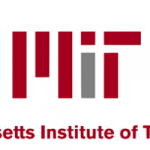UofArkansas Pine Bluff will join three state research effort & will develop quantum technology

(ArkansasOnline) A quantum materials research effort highlighted in a White House announcement last week will expand to include the University of Arkansas at Pine Bluff.
Federal officials last Tuesday announced a workforce development strategy to go along with an already underway push to develop quantum materials and devices, considered to be a new generation of computing and communications technology.
Part of the research effort has included a $20 million National Science Foundation grant announced last year to establish what’s known as the MonArk NSF Quantum Foundry at the University of Arkansas, Fayetteville and Montana State University. Researchers are working to more efficiently produce materials formed by bonding a single layer of atoms.Last week the White House noted a new $2.2 million National Science Foundation grant to expand the MonArk project.
UA-Pine Bluff, a historically Black university, and the South Dakota School of Mines and Technology are now part of what’s known as the Arkansas-Montana-South Dakota 2D Quantum Photonics Alliance.
Tomasz Durakiewicz, a project manager for the National Science Foundation, in a statement said UA-Pine Bluff “will primarily assume responsibility for developing efficient and fast devices suitable for transmitting and processing quantum information using light.”
Sanjay Behura, a UAPB assistant professor of physics and mathematics, said that a post-doctoral researcher, about six undergraduate students and one graduate student will take part in the campus research effort he’s leading over the next four years.
The project “will significantly expand quantum career-path opportunities for UAPB graduate and undergraduate students,” Behura said in a statement.
The National Science and Technology Council report released last week on the quantum information science and technology workforce states that the “workforce landscape is difficult to assess due to the complex and interdisciplinary nature of the work.”
The report nevertheless stated that, based on available information, “there appears to be a talent shortage at all levels.”





















